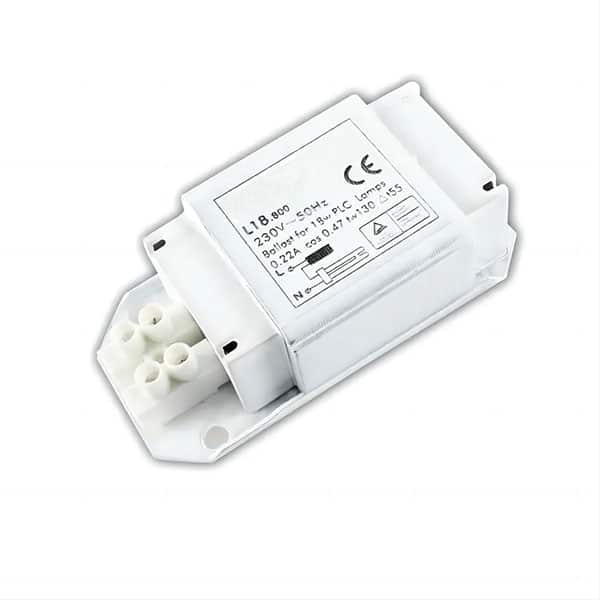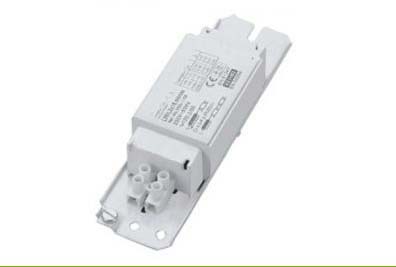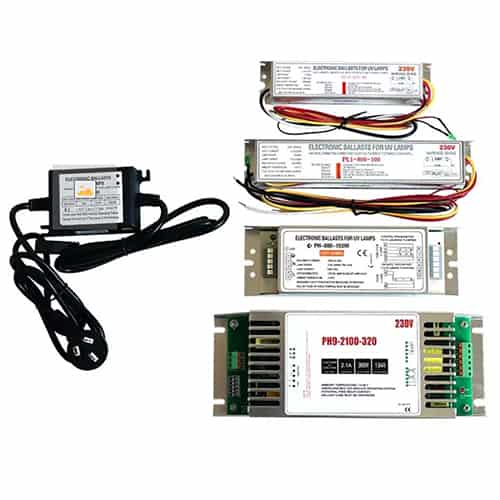Many people are confused about whether CFL ballasts output DC (Direct Current) or AC (Alternating Current). This confusion can lead to incorrect assumptions about how these lighting systems work, which can cause issues during installation and operation.
CFL ballasts output AC, not DC. Compact fluorescent lamps need alternating current to work. The gas inside the tube needs alternating current to keep the arc going and produce light. We’ll talk about how CFL ballasts work, why they output AC, and what would happen if they output DC.
What is a CFL Ballast and How Does it Work?
A CFL ballast is a key component that regulates the voltage and current flowing into the compact fluorescent lamp. It ensures the lamp receives the right amount of power to start and continue operating safely. The primary function of the ballast is to provide the initial high voltage needed to strike an arc between the two electrodes inside the lamp. Once the arc is established, the ballast reduces the voltage and maintains a steady current to keep the light on efficiently.
Without a ballast, the CFL would draw too much current, potentially overheating and burning out the lamp. Additionally, the ballast helps to control flickering and maintain a steady light output, ensuring the lamp works efficiently over its lifespan.
Understanding the Difference Between AC and DC
To understand why CFL ballasts output AC, it’s essential to distinguish between alternating current (AC) and direct current (DC). AC is the type of current that changes direction periodically, typically at a frequency of 50 or 60 Hz, depending on the region. It’s the form of electricity most commonly used in household and commercial applications because it’s more efficient for transmitting power over long distances.
DC, on the other hand, flows in a single, constant direction and is commonly found in battery-powered devices or electronics like smartphones and laptops. DC power is stable but less suited for applications like lighting that require the current to change direction for efficient operation.
Why Do CFL Ballasts Output AC?
CFLs are designed to work with alternating current because the gas inside the tube needs to be constantly re-ignited to produce light. The ballast converts the mains AC into a higher frequency AC, which helps the lamp strike the arc and maintain it. The alternating current helps create and sustain the electric arc between the two electrodes inside the CFL. This arc excites the gas, producing ultraviolet light, which then interacts with the phosphor coating inside the tube to emit visible light.
If a CFL were powered by DC, the arc would not be re-ignited at the necessary intervals, leading to poor performance or complete failure. The gas inside the lamp would not stay ionized in the same way, and this could cause the lamp to flicker, produce uneven light, or fail altogether. That’s why AC is necessary to keep the CFL functioning efficiently, providing smooth, steady illumination.
How a CFL Ballast Converts Power
CFL ballasts typically receive AC power from the mains electricity supply. This power is usually at a standard frequency of 50 or 60 Hz, depending on the country. The ballast then converts this power into high-frequency AC—often in the range of 20,000 to 40,000 Hz. This conversion is crucial because the higher frequency makes the lamp more energy-efficient, reduces flickering, and prolongs the lifespan of the CFL.
In an electronic ballast, the AC is first rectified into DC and then converted back into high-frequency AC. This process optimizes the operation of the fluorescent lamp, ensuring that it starts up quickly, reduces power consumption, and eliminates the flicker and noise commonly associated with older magnetic ballasts.
What Happens If a CFL Is Powered with DC?
Using DC power with a CFL is problematic because the lamp is not designed to operate with it. If you were to power a CFL with DC, the arc inside the lamp would not be properly maintained, and the performance of the lamp would degrade significantly. The electrodes inside the lamp would wear out faster, leading to premature failure.
Furthermore, because the lamp relies on the re-ignition of the arc to function correctly, using DC would result in dim or flickering light. The gas discharge inside the lamp depends on the alternating nature of AC to sustain the arc, so using DC could potentially damage the lamp or cause it to fail completely.
AC Output in CFL Ballasts: Implications for Installation and Usage
Understanding that CFL ballasts output AC is crucial for anyone installing or using these lighting systems. Knowing that they are designed for AC power ensures that they are properly connected to the mains power supply, which also delivers AC. Installing CFLs in environments where only DC power is available would not work without the appropriate converters and could result in poor lighting performance or equipment damage.
Additionally, if you ever need to replace a ballast in a CFL fixture, knowing that the output is AC helps you choose the correct replacement. Using an incorrect type of ballast could lead to malfunction, safety issues, or reduced efficiency.
Final Words:
Compact fluorescent ballasts output AC. This is important for compact fluorescent lamps to work correctly. The alternating current helps maintain the arc inside the lamp to provide smooth and efficient light. Knowing that CFL ballasts operate on AC will help you install and maintain your CFL lighting systems correctly. This will prevent problems like flickering or early lamp failure.




